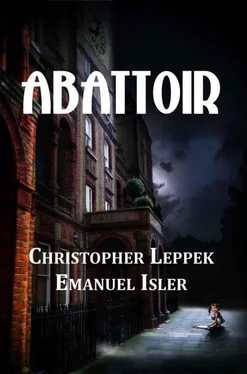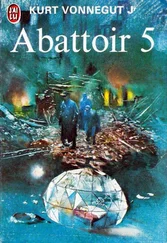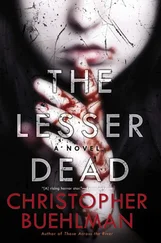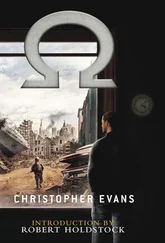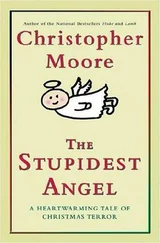Alex moved the end tables and pushed the sofa away from the center of the living room, providing ample space for the job at hand.
It was a considerable task.
Like children with pieces of a puzzle, they moved back and forth, trying to match up the pieces, changing place with each other as they moved around the image slowly taking shape before their eyes.
As in most puzzles, the corners and edges seemed to come together first, then progressed slowly toward the center. At first, they could see the shape of a ceiling and a tiled floor in what had previously appeared to be random markings.
They were so focused on what they were doing that Su Ling and Cantrell lost track of time. Soon a shaft of dawn seeped through the curtains.
They took a break for coffee, but could barely wait to get back to work.
Details began to form: the unmistakable hooves of an animal; a man’s working boots; what looked like a pair of boy’s sneakers.
The first clearly recognizable image appeared on the left side of the drawing: A queue of animals—longhorn steers—approaching the center of the picture from a ramp which led from somewhere below.
Su Ling gasped when that portion of the puzzle became clear.
“Look at that,” Cantrell said. “Can’t you see it? It’s the ramp, I’m sure of it.”
She nodded in agreement, frowning.
“I can’t believe that this came from the imagination of a little girl, Alex… ”
“We don’t know where this is coming from, Su, and we don’t know what it means yet. Let’s keep going.”
Eventually, the center of the picture began to take shape. Dominating the composition was a single longhorn steer; nostrils flared, eyes wide, glaring with terror.
Alex worked from the right of the puzzle, moving steadily upwards.
This section was dominated by the figure of a man; tall and strong looking, wearing some kind of overalls and dark work gloves. The expression on his face mirrored that of the longhorn, though there was something else to his expression… something they couldn’t discern at first, but which gradually became clear the more the figure coalesced.
Su Ling gasped at the sight of it.
“I’m not sure I want to finish this thing,” she said when she saw the man’s face. “I don’t like where this is going.”
“We have to; we have to know what it means.”
She nodded silently, returning to her work.
Half an hour later, they arrived at the center of the picture, finally comprehending the man’s contorted expression.
One of the steer’s horns was embedded in his chest. A long stream of blood spurted from the wound.
Su Ling put her hand over her eyes, like a theatergoer watching a horror movie.
“Oh my God.”
“It’s okay, Su.” Alex put his arm around her shoulders “We’re almost finished. You sit down. I’ll do it.”
She didn’t argue, seating herself on the couch, drawing her knees up to her chest. Her eyes, however, never left the coalescing picture.
It only took a few minutes to assemble the final pieces of the puzzle.
When he was done, he joined Su Ling on the couch and then took her hand, leading her to a standing position upon it. From their slightly elevated position, they had a perfect view of the entire work, which formed a neat rectangle in the center of the living room floor.
They were looking at the final figure, which appeared in the lower left corner.
A boy, dressed in overalls, like the dying man, but he had canvas sneakers on his feet instead of boots. He was looking directly at the violence in the center of the picture, his face an ashen mask of horror.
“It’s him,” Su Ling said. “Isn’t it?”
Cantrell exhaled.
“Yes, no question; he’s the one we saw… ”
“The ghost.”
“It’s the old killing floor, the one that used to be here. It looks like it might have been a typical day at the slaughterhouse, but… ”
“But something went horribly wrong,” she offered. “It wasn’t a typical day after all.”
Something stirred behind them. They both started, turning away from the composition.
Anna stood across the living room in her pajamas. They had no idea how long she’d been standing there.
“Anna, are you okay?” her mother asked.
In response, the child slowly approached the picture, gazing down at it. Su Ling made a grab for her, perhaps to pull her away from the awful vision, but Cantrell grabbed her arm.
“Let her look.”
The girl’s eyes went from one corner to the next, slowly and methodically taking in the whole thing.
Tears began to flow from Anna’s eyes, although she remained silent and expressionless.
When Su Ling saw them, her own tears began to flow.
Anna began to shake her head back and forth, and the stony expression on her face—an expression that had been there, unchanged, for more than a year—began to change. Her lower lip thrust out in a pouting gesture; her forehead furrowed. Her eyes, usually wide open, narrowed as the tears flowed.
“Alex… ” Su Ling whispered.
Anna began to cry, her voice coming in pain-wracked sobs.
“Oh my God, Alex… ”
But as suddenly as it began, the crying stopped. Anna rubbed the tears from her eyes with her hand and slowly turned to face her mother.
Su Ling held her breath.
“He’s coming,” Anna said softly in a voice her mother had not heard for a very long time.
“He’s coming,” she repeated, then turned toward the curtained window.
She walked to it deliberately and parted the curtains, allowing the morning sun to flood the room.
“Rupert,” she called to no one they could see. “Rupert.”
The old man’s eyes jerked open. He had heard the call.
His surroundings were the same as they had been for the last six decades—a sterile, unadorned room inside the nursing home, lit faintly by the early morning sun. The room contained no books, for he never read; no television, for he never watched; no games, for he never played; and no photographs, for he had no family or friends.
But he heard the call.
First as a soft whisper which reverberated in his head. Then louder; enough to startle him from sleep.
He didn’t understand the call, any more than he understood where he was, who he was, or why. The nursing home staff occasionally debated whether the old man actually realized that he existed. They had been doing this for years, through various staff and ownership changes.
He was a human fixture here. He never caused problems, never spoke. He was never a challenge, because—despite his condition—he was in relatively good health for a man his age.
He had a name, but nobody used it anymore. He was invariably labeled “the Old Man” and everybody knew who that was.
But he did realize his own existence, if not on the level that most people did. He knew how to dress himself. He knew when it was time to eat, when to go to the bathroom, when to sleep.
Nobody ever realized, however, that he knew much more than that.
The Old Man—in his mid-70s, most likely—was tall, over six feet and rail thin. One would never have called him agile, but his movements were surprisingly sure and steady for a man diagnosed as “near catatonic.”
His head was bald, his face gaunt, but not so much that one could not imagine a good-looking man some years ago. His eyes, his only expressive feature, were vibrantly blue.
He had heard the call, and did not fully understand, but knew, somewhere deep within the fog of his mind, that he had to respond.
§
Su Ling’s emotions had gone from the morning’s unexpected joy to sheer frustration. Now, as noon approached, she felt herself edging back toward her old despair.
Читать дальше
